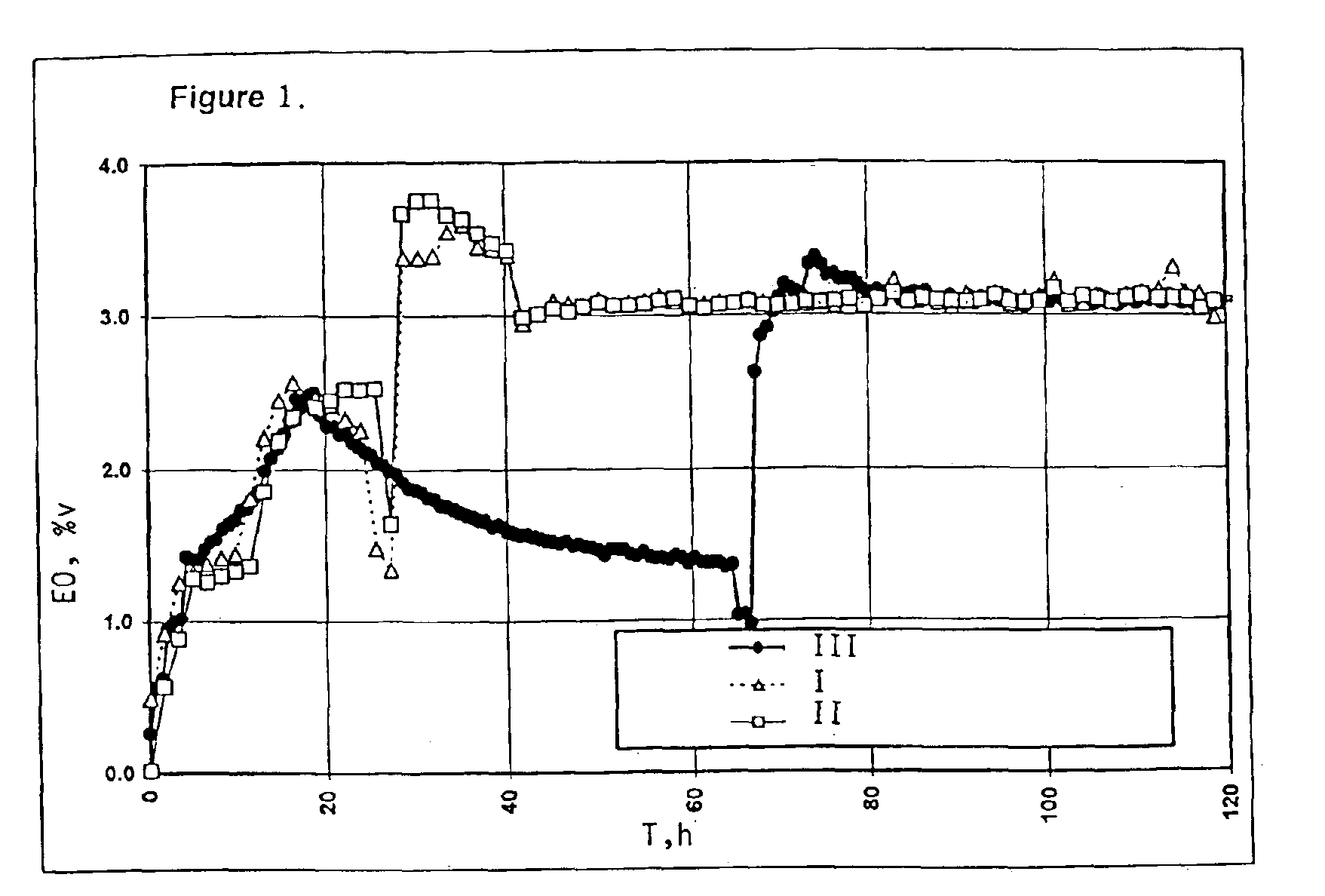Method for the start-up of an epoxidation process and a process for the epoxidation of an olefin
a technology for epoxidation and olefin, applied in the field of epoxidation process and epoxidation process, can solve the problems of difficult control of epoxidation process, and low selectivity of olefin oxides
- Summary
- Abstract
- Description
- Claims
- Application Information
AI Technical Summary
Benefits of technology
Problems solved by technology
Method used
Image
Examples
examples 1-3 (examples 1 and 2
ACCORDING TO THE INVENTION; EXAMPLE 3 FOR COMPARISON)
[0076]A catalyst, as defined in U.S. Pat. No. 4,766,105, comprising silver, rhenium and cesium on α-alumina, was employed in the following experiments.
[0077]Three identical tubular microreactors were charged each with a 4.2-g sample of the crushed catalyst. The catalysts in the reactors were heated at 215° C. during 40 hours under a flow of nitrogen gas at GHSV of 820 Nl / l.h. The catalyst temperatures were increased to 225° C., the nitrogen feed to the catalysts was replaced by a feed of an ethylene / carbon dioxide / nitrogen mixture, and subsequently ethyl chloride was added to the feed. Then oxygen was added to the feed. The oxygen / ethylene / carbon dioxide / nitrogen volume ratio in the resulting feed amounted to 4:15:4:77. The ethyl chloride concentration in the feed was 2.6 ppmv (i.e. 2.6×10−4 mole-%, calculated as moles of chlorine, relative to the total feed). The relative quantity Q was 8.7×10−6. The GHSV was 3300 Nl / l.h. The rea...
PUM
 Login to View More
Login to View More Abstract
Description
Claims
Application Information
 Login to View More
Login to View More - R&D
- Intellectual Property
- Life Sciences
- Materials
- Tech Scout
- Unparalleled Data Quality
- Higher Quality Content
- 60% Fewer Hallucinations
Browse by: Latest US Patents, China's latest patents, Technical Efficacy Thesaurus, Application Domain, Technology Topic, Popular Technical Reports.
© 2025 PatSnap. All rights reserved.Legal|Privacy policy|Modern Slavery Act Transparency Statement|Sitemap|About US| Contact US: help@patsnap.com

